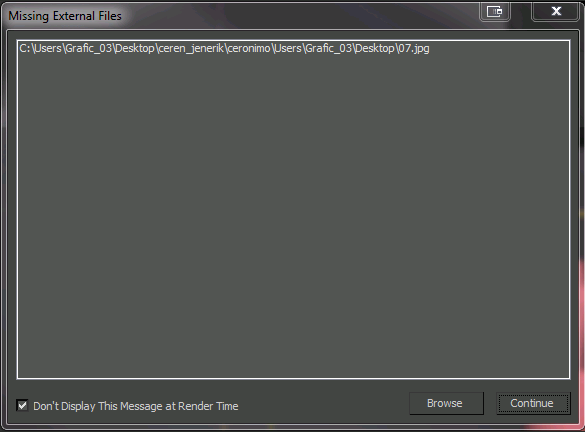For easy, trouble-free delivery to the customer, zip your 3D model files, textures, and bitmaps into a flat file structure. Zipping into a flat file structure means that you have combined all of your textures, maps, scenes, and any other related files into a single folder that you have compressed.
When customers open model files that have missing components (like bitmap textures), they will receive error messages:

Missing external files error in 3ds Max
Missing file error in Maya

Missing asset error in Cinema4D

Missing file error in Lightwave
When a customer receives a missing file/asset error message, he or she will need to contact TurboSquid Support for the missing assets. At that point, support will need to contact the artist for those missing files. If a customer is on a tight deadline, waiting for an artist to provide those files is not always a possibility. In those cases, support will need to issue a refund so that the customer can find something else to meet the deadline.
To ensure that you are providing customers with a usable model, you should remove all unused files from the asset folder and strip all of your texture paths. You should do this after you finish your scene but before you zip all of your files together. Once you complete these steps, your scene file will only include necessary files and not extra files that take up unnecessary space and cause customer confusion. Stripping your texture paths ensures that the provided files will open and render without any issues.
It is vital that you spend this extra time to collect and verify that your scene file is complete. You want your customers to have an excellent experience with your model, and insuring that your files are packaged properly will create buyer trust that can lead to future sales of your models.




